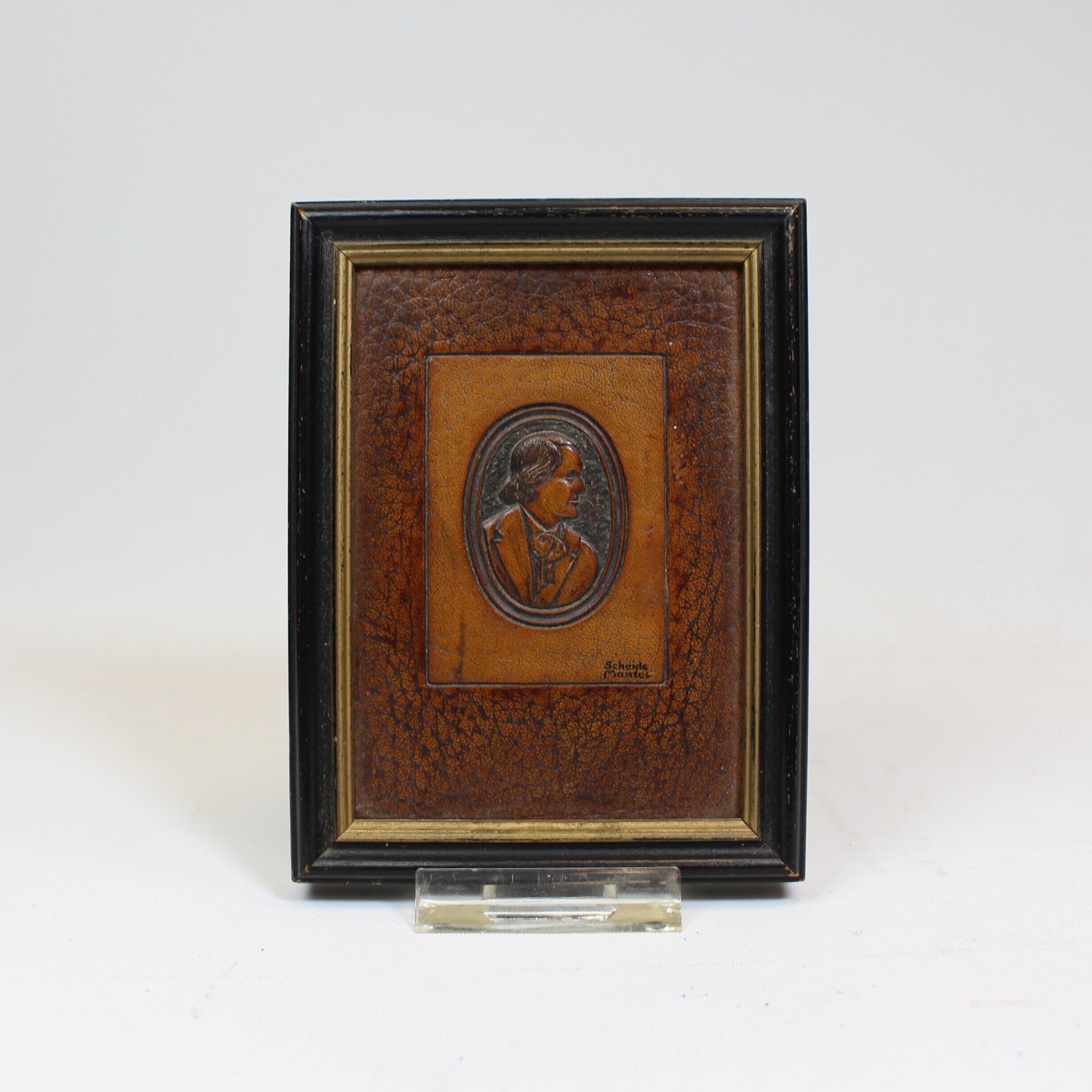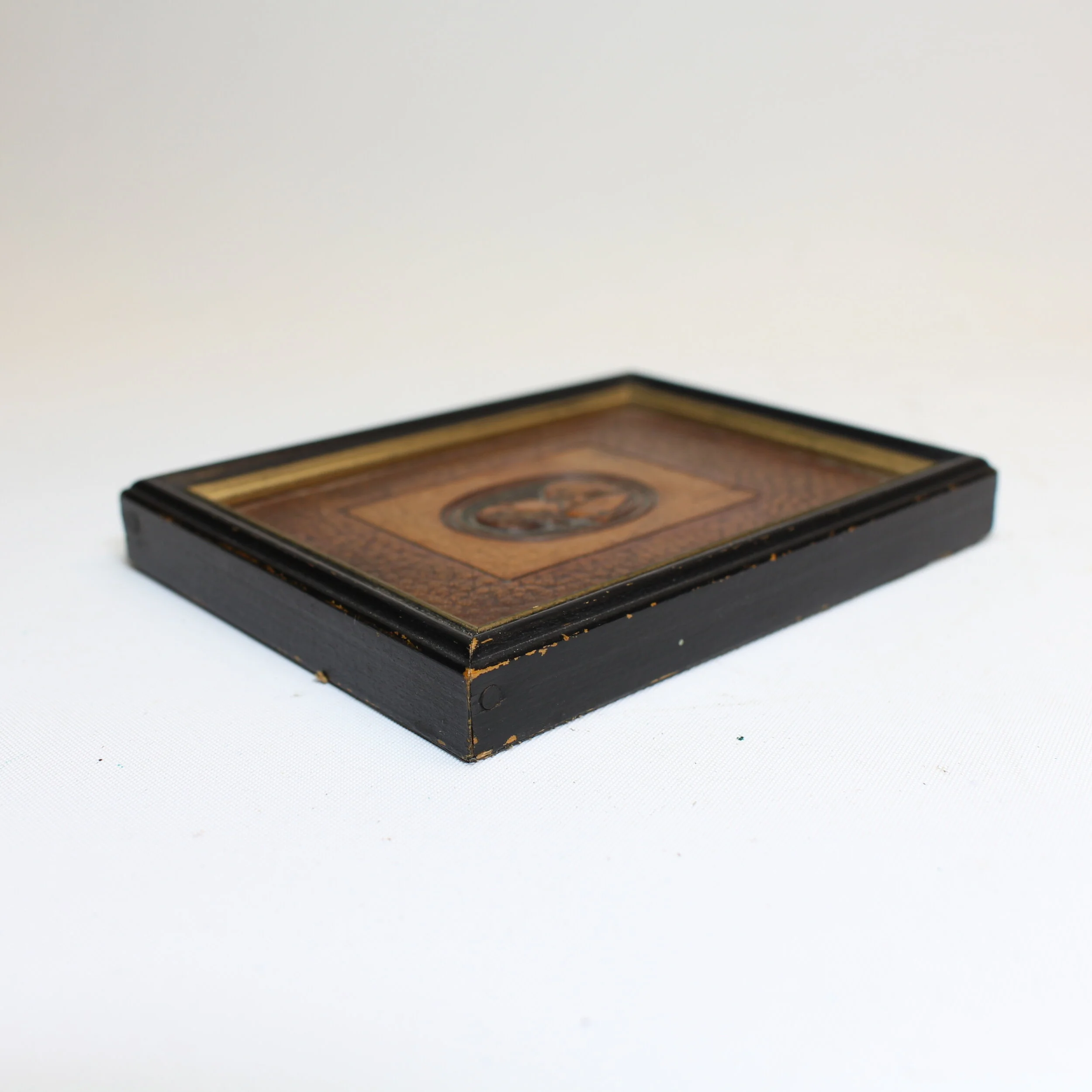The ScheideMantels
(The text below is excerpted from: "The ScheideMantel House," by David Cathers, published in the Fall 2000 edition of American Bungalow)
George ScheideMantel met the 20-year-old Gladys Grant at the Roycroft Inn in 1905. Her mother was a well-regarded cook there, and Gladys went to the inn for dinner every night.
George, a young man in need of a job, had come upon a copy of The Philistine, a monthly magazine published by Elbert Hubbard and the Roycrofters, and reading it gave him the idea that the Roycroft campus, in East Aurora, N.Y., might be a good place to work. He found his way there and within a few weeks he was employed as a bellhop, carrying guests' luggage.
His pay was $10 a week, with $7deducted for room and board. Overt he next few years, tutored by another Roycrofter, he developed into a masterful leather artisan and designer, and eventually took charge of the Roycroft modeled-leather department.
Shortly after George and Gladys were married in 1908, they decided to build a house at 363 Oakwood Avenue, just a few blocks away from the Roycroft campus. Of course it was to be a Roycroft house, and to help them design it, the ScheideMantels turned to Roycroft architect William Roth. The two-story structure went up in 1910, built by a crew of Roycroft workers.
The ScheideMantels (pronounced "shied- a-mantel ") lived many happy years in this house. After George died, Gladys stayed on until 1985, when, to mark her 100th birthday, she gave the house and its contents to the Aurora Historical Society. Today the society operates it as the Elbert Hubbard-Roycroft Museum.
The Elbert Hubbard-Roycroft Museum
(The text below is excerpted from: The Elbert Hubbard Roycroft Museum (The Webpage of the Roycrofters))
The first Elbert Hubbard Museum was located in one large room in the East Aurora Village hall. It was made possible by the generosity of the Godfrey family. They purchased beautifully bound and illumined books and original manuscripts which formed the nucleus of the Elbert Hubbard Library museum. Soon Roycroft furniture, copper, and other related items were given to the Museum.
In 1985, Gladys ScheideMantel, at the age of 100 years, donated her house, a craftsman bungalow, to the Aurora Historical society.
The Hubbard Museum combined its acquisitions with the Roycroft collection of George and Gladys ScheideMantel, in the house they had built (1910) by Roycroft Craftsmen. The garden contains a fountain base (The Magna Mater) sculptured by Catherine Maltwood and the Rix Jennings Memorial Bench.
The ScheideMantel house is forest green clapboard and shingle bungalow with a stone foundation cozy veranda. The interior has oak floors and chestnut woodwork. The woodwork is most striking in the splendid dining room with its beamed ceiling and magnificently built sideboard of polished chestnut with squared glass doors, adorned with hand-crafted copper hardware. The original oak dining room furniture belonged to the ScheideMantels, as did the lighting fixture with its Steuben glass globes.
There is a handsome staircase leading to five bedrooms. One is kept as George ScheideMantel maintained it when he headed the Roycroft Leather Shop. It contains his leather working tools, patterns and some fine examples of his craftsmanship.
George and Gladys Scheidemantel House
(the text below is from Wikipedia, the free encyclopedia)
George and Gladys Scheidemantel House is a historic home located at East Aurora in Erie County, New York. It is a locally distinctive example of the Arts and Crafts movement style of architecture built in 1910. It is a two-story, frame, bungalow that combines elements of the American Foursquare and Craftsman styles. George Scheidemantel was for a time head of the Roycroft Leather Shop and the house designer, William Roth, was head Roycroft carpenter.
The house now serves as The Elbert Hubbard Roycroft Museum. The museum features furniture and decorative items produced by the Roycroft community.
It was listed on the National Register of Historic Places in 1993.





